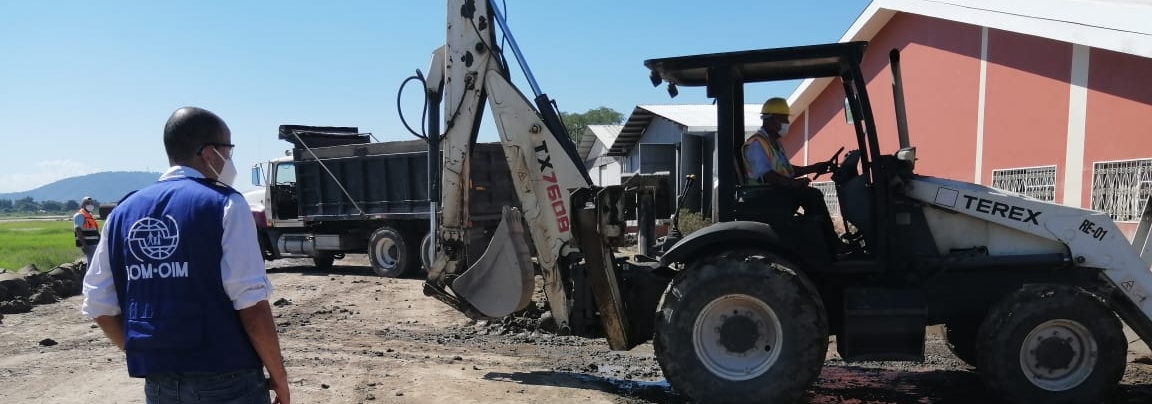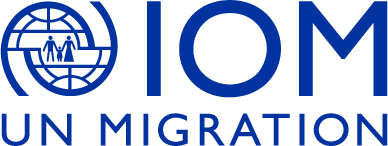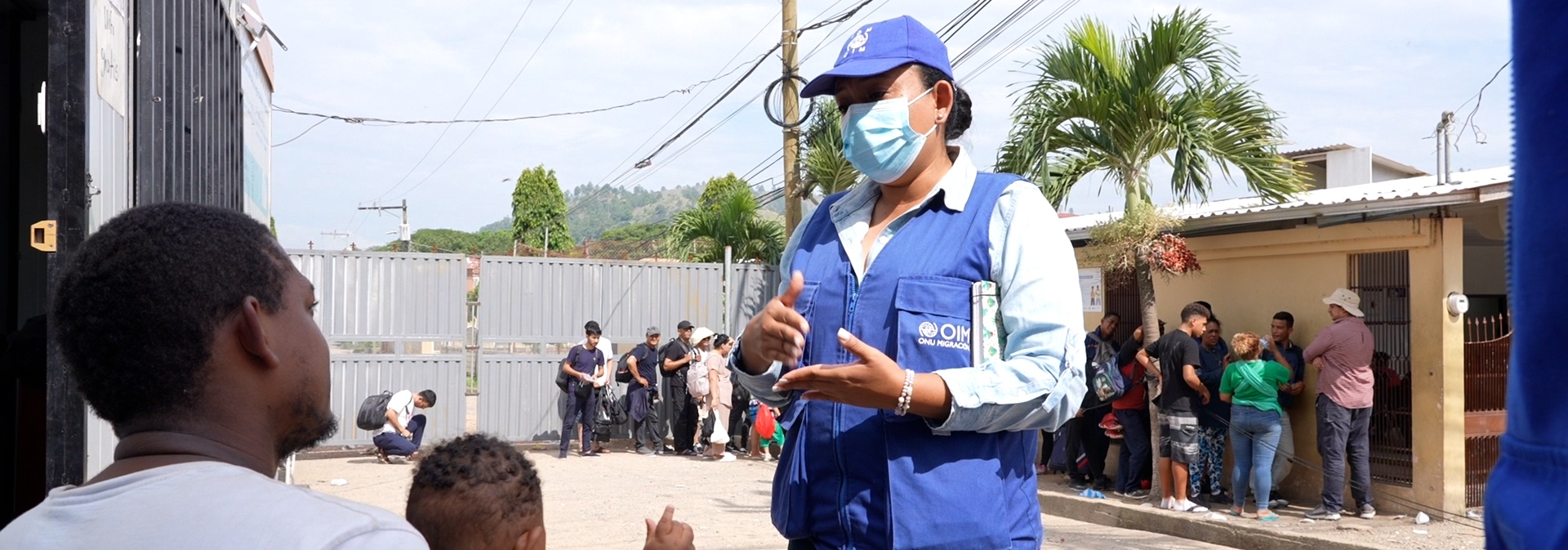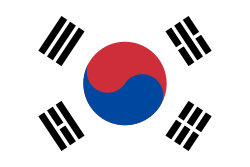IOM Vision
IOM, in partnership with key strategic actors, seeks to provide direct support to vulnerable populations and to strengthen institutional and community capacities on preparedness and response for crises in Honduras, including disaster-related emergencies, and large population movements in order to reduce the risks and vulnerabilities of affected populations (internally displaced persons, returnees, migrants and host communities) and support sustainable recovery, preparedness and reintegration at the national and local levels.
Objective
Saving lives and protecting people on the move
Upon request for international assistance by the government, IOM will:
- provide immediate life-saving assistance and protection to local populations, communities, and internally displaced persons (IDPs) affected by disasters as well as international migrants crossing the country, in close collaboration with the government and partners. In 2024, IOM expects to respond to at least one major disaster event, such as tropical storms, floods, or drought.
- strengthen and diversify protection services for migrants in transit, IDPs, and returnees in targeted communities, and manage the efficient distribution of humanitarian aid in shelters.
- conduct hazard/risk assessments in 10 municipalities and support the development of mass evacuation plans for communities at risk of displacement, following the recommendations of COPECO and considerations for potential migrants living in these communities, following the Migrants in Countries in Crisis (MICIC) Guidelines.
In addition, IOM will strengthen partnerships with COPECO and INM in order to promote the availability of timely information on internally displaced populations due to disasters, as well as mixed population flows. IOM will support the government's capacities to collect, process, analyse and share data for evidence-based decision-making. In addition, IOM will collect information on IDPs and mixed population flows through DTM to inform decision-making. Based on the key role data-sharing plays in humanitarian emergencies, data will be promoted with local and central government institutions, Humanitarian Clusters, United Nations agencies, donors, local committees, civil society, and other key stakeholders. Findings will also inform internal IOM programmes and project proposal development.
IOM will support the basic needs of affected communities and displaced persons, with a focus on marginalized groups such as elderly people, women and girls, and people with a disability, in at least one emergency in Honduras by:
- Distributing multi-purpose cash assistance in coordination with social protection agencies and implementing partners to encourage the localization response.
- Distributing food (through cash-based interventions (CBI)) in collective centres, as well as non-food items (NFIs) kits including shelter, kitchen supplies, cleaning supplies, and clothes.
IOM will continue leading the CCCM Cluster and supporting the government in the coordination and management of their emergency shelters (collective centres) for displaced populations in at least one emergency in Honduras through the deployment of an emergency Shelter/CCCM coordination team (coordinator, information manager, CCCM technical advisor) to support coordinated interventions among all stakeholders, contribute to coordinated and inclusive needs assessments and strengthen the capacity through CCCM workshops. Activities will include:
- Supporting via mobile team to the centre managers on the coordination and management of collective centres or camps.
- Building capacity of local communities such as Emergency Local Committees (CODELES) and Municipals (CODEMS), and organizations which are members of the cluster, especially those who are implementing at local level, encouraging AAP and empowerment approaches of local population.
- Ensuring needs of all groups of IDPs in collective centers through supporting representative site governance and mechanisms of AAP.
- Providing basic equipment for collective centres, such as stoves for cooking, chairs, tables, fans, washing machines, and garbage cans, among others.
IOM will provide protection assistance to affected populations focusing on displaced persons, vulnerable migrants, returnees, and migrants in transit, in all phases of displacement by:
- Conducting a GBV risk analysis at the southern border.
- Providing protecting services, basic services (shelter, food, wash, NFI), information on available referral mechanisms, and prevention of gender-based violence along the migration routes, ensuring meaningful access, safety and dignity, do no harm, accountability and empowerment.
- Mainstreaming protection principles across all interventions (shelter, mental health and psychosocial support (MHPSS) and CBI) to ensure safety and dignity, avoiding causing harm and guaranteeing meaningful access to assistance for all persons in need, without discrimination. This will be accomplished through capacity building at national and local level, strategic guidance, awareness raising, coordination and partnerships.
- Providing technical guidance to other IOM projects, IOM’s implementing partners and governments to integrate GBV activities s such as dignity kits, psychosocial support and case management, including referrals to existing health services of Government, members of the TWG of health and migration .
- Promoting PSEA by ensuring that all IOM partners and staff are duly trained on the key concepts of PSEA, how to report incidents, responsibilities, obligations, and the victim-centered approach.
- Building a system of referrals to appropriate response mechanisms, such as asylum procedures, child protection services, procedures for victims of trafficking, assistance to women and girls at risk, and assisted voluntary return programs, in different languages and easy reading formative material for international migrants in transit on how to obtain these services.
IOM will provide life-saving WASH assistance to the affected communities and displaced persons in at least one emergency and support WASH preparedness in relevant municipalities in Honduras by:
- Transporting and distributing pre-positioned differentiated hygiene kits desegregated by sex and age. The hygiene kits will consist of toilet paper, deodorant, bath soap, shampoo, toothbrush, toothpaste, drink pot, antibacterial hand gel, sanitary towels (in the hygiene kit for women and girls), and transparent back packaging. The distribution will be coupled with hygiene promotion to ensure proper use of the hygiene kits and provide access to appropriate hygiene practices such as handwashing with soap and safe disposal of feces, among other good practices to reduce the spread of diseases.
- Prepositioning hygiene kits, including menstrual hygiene management (MHM) kits for at least 10,000 households, storing this humanitarian aid in the IOM warehouse in Panama.
IOM will provide life-saving shelter and non-food item assistance to affected communities and displaced persons in at least one emergency in Honduras through:
- Improving infrastructure (including basic equipment such as stoves, refrigerators, washing machines, etc) and living conditions for IDPs, vulnerable migrants, migrants in transit, and returnees in shelters (collective centres), contributing to the risk reduction of gender-based violence.
- Strengthening the relevant regional and national shelter and CCCM coordination structure in collaboration with COPECO and other partners by deploying (Emergency) Shelter Sector Specialists to monitor stakeholder activities, coordinate assessments, set standards, and actively coordinate activities and development of durable solutions in an early stage.
- Transporting and distributing pre-positioned emergency shelter NFIs for 15,000 households (75,000 persons), including beds, cover sheets, pillows, towels, solar lamps, kitchen sets and other items previously coordinated in its composition with the CCCM cluster, from the IOM warehouses in Panama, to displaced and affected households in collaboration with partners.
- Carrying out GBV risk mitigation activities established in IOM’s Institutional Framework to address gender-based violence in Crises which is aligned to the GBV guidelines by training non-GBV specialized staff on how to handle a GBV disclosure safely and ethically and promoting the participation of women and girls throughout the design, implementation, and monitoring processes of shelter-related activities. This will be implemented in close coordination and consultation with the GBV subcluster and specialists from the Resident Coordinator of the UN.
- In partnership with international and local non-governmental organizations (NGOs), supporting community/owner-driven house repairs for displaced households through a combination of technical assistance, awareness-raising/training on safe construction, provision and distribution of construction materials, labour, and/or conditional cash support for reconstruction.
IOM will undertake mental health and psychosocial support (MHPSS) by:
- Providing community-based mental health and psychosocial support (including psychoeducation, psychological first aid, counseling, and socio-relational cultural and play-based psychosocial activities) for most vulnerable groups and communities, in emergencies, and referrals to specialized life-saving mental healthcare for specific cases. This activity will be implemented through an implementing partner and their mobile teams, in line with IOM's institutional approach for emergencies and the IOM Manual on Community-Based MHPSS in Emergencies and Displacement, and the IASC MHPSS Guidelines.
IOM will provide direct health support by:
- Supporting the Government in hiring two primary care doctors (outsourcing) to provide assistance to the migrant population in transit by the southeast and west borders. This personnel will also support issues of health promotion, disease prevention, detection of migrants with emergencies or notifiable diseases with their respective referral to second level care centres, health data registration and sharing with the corresponding government authorities (INM and SESAL, among others)
Through the CCCM Cluster in Honduras, IOM initiatives will include:
- Strengthening the preparedness of selected (vulnerable) municipalities by profiling the emergency shelter capacity and upgrading at least 40 collective/emergency shelters, developing community evacuation plans, emergency response training of communities and improving access to data.
- Prepositioning and storing NFIs (including tarpaulins, fasteners, kitchen sets, mats, solar lamps, tools, etc.) for at least 20,000 persons in warehouses in Panama.
- Supporting COPECO and the UN system with all aspects of migration in emergencies, including the development of policies and protocols around planned relocations, mass evacuations, and emergency shelters, contributing to the development of regional and sub-regional UN contingency plans with a focus on shelter, CCCM, WASH, and protection.
- Playing an active role in coordination platforms such as the Latin American and Caribbean Network of Environmental Funds (REDLAC) and the Humanitarian Country Team during emergencies.
Based on the constant and high impact of disasters that affect the country every year, as well as the complex mixed population flows, there is a need to fill in the current information gap. Therefore, it is fundamental to strengthen the capacities of Honduran institutions to collect, process, analyse and share data on displaced populations due to both phenomena. It is estimated that more than 937,000 people were internally and externally displaced during 2020 due to disasters, and 144,000 in 2022. Additionally, it is important to generate information on the link between internal displacement and forced migration, since one preludes the other in some cases. DTM activities will include this key area.
IOM will ensure the strengthening of DTM activities revolving around two main outcomes:
- Building the capacity of government institutions such as COPECO, INM and other relevant stakeholders to collect, process and analyse timely information on displaced populations affected by disasters, as well as mixed population flows.
- Developing mechanisms to share timely data collected using DTM methodologies such as the multi-sectoral location assessment (MSLA) and multi-sectoral needs assessment (MSNA) on displaced populations with humanitarian actors, considering AAP and data principles, to better prepare for and respond to emergencies related to natural disasters.
Key stakeholders that will benefit from the data sharing include UN agencies, the Humanitarian Country Team, Clusters, NGOs, other government institutions, donors and international cooperation, and IOM internal programmes and units, among others. Examples of data usage include emergency response plans, resource allocation for humanitarian assistance, development of project proposals, etc.

Objective
Driving solutions to displacement
In collaboration with the authorities and partners, in 2024, IOM will:
- provide durable support to vulnerable households that are displaced or whose house has been damaged or destroyed by a disaster, with a particular focus on women, girls, older persons, people living with human immunodeficiency virus (HIV)/acquired immunodeficiency syndrome (AIDS) and people with disabilities to carry out specific livelihood projects. This support could include legal support, access to WASH facilities, and land provided by municipalities and/or the national government.
- support local entities working on migration and relevant local stakeholders to increase their capacities to provide essential services to vulnerable populations and lay the foundations for durable solutions, lasting peace, and sustainable development.
- implement community-based and migrant-inclusive disaster risk reduction (DRR) programmes, remittances for climate adaptation, rural development and migration-sensitive climate adaptation efforts in at least five municipalities.
In 2024, IOM Honduras will support land and property through:
- The provision of technical, coordination and planning support to the Honduras Government on reconstruction, reparation, housing, land and property rights, planned relocations, and land planning, to pave the way, both politically and socially, for durable solutions for displaced households or households at risk, encouraging Accountability to Affected Populations (AAP) and Community Feedback Mechanisms (CFM).
IOM will promote livelihoods and economic recovery through:
- Interventions on livelihoods and rural poverty alleviation schemes in host communities that receive most Honduran returnees migrants, to increase social cohesion and redress the gross inequalities around the country.
From the lesson learned and experience of 2023, in 2024, IOM will continue to support the Honduras Government conduct another hazard/risk assessments in ten other communities and support the development of mass evacuation plans for communities at risk of displacement, following the recommendations of COPECO and considerations for potential migrants living in those communities following the MICIC Guidelines. In addition, IOM will provide support in developing the preparedness capacities of government and non-government partners in humanitarian response, assisting vulnerable populations, and providing support for populations who are likely to be severely affected by the impact of disasters and crises. IOM’s initiatives will include:
- Providing training on DRR, in line with the MICIC Guidelines and other internationally recognized standards, to crisis-affected communities as part of CCCM and evacuation, shelter response, and recovery programmes, mainstreaming protection principles and durable solutions.
- Supporting the drafting, review, and update of local policies on disaster risk reduction and management and local climate change adaptation plans and strengthening the implementation capacities of local actors through the provision of training, equipment, and tools.
- Conducting research and actions related to climate change adaptation (CCA) and contributing to the generation of relevant science-based evidence and utilization of local knowledge to inform the government’s policies and programs, and multi-sectoral programs (i.e. food security-WASH-climate change, DTM-community stabilization) with other development partners including UN agencies and civil society (CSO) partners.
- Conducting advocacy work for policies and research related to CCA linked to IDPs, migrants in transit, and returnees in Honduras.
- Conducting consultations with communities vulnerable to climate risk to develop community action plans that identify localized climate adaptation strategies and providing technical assistance to implement these plans.
- Supporting at-risk communities and individuals to mainstream climate-smart, green livelihood strategies, including through the set-up of community-based climate risk monitoring and early warning systems.
- Supporting emergency public health risk reduction and prevention measures linked to disaster response activities; building health system capacity to prevent, detect and respond to disease outbreaks and health threats, including through the strengthening of disease surveillance systems and population mobility mapping (PMM) to foster a migration-sensitive approach to preparedness and risk reduction, as well as community events-based surveillance, data collection and ensuring information is integrated into national surveillance and reporting mechanisms.
IOM activities will include:
- Strengthening the cooperation of governmental and non-governmental organizations to have a Crisis Plan with a focus on the health of migrants in transit.
- Supporting pre-positioning items in medical supplies for people with disabilities or other vulnerable situation (such as wheelchairs or crutches) and key logistic sources such as ambulances.
Honduras
The map used here is for illustration purposes only. Names and boundaries do not imply official endorsement or acceptance by IOM.
Figures are as of 31 December 2023. For more details of IOM's operational capacity in country, please see the IOM Capacity section.













